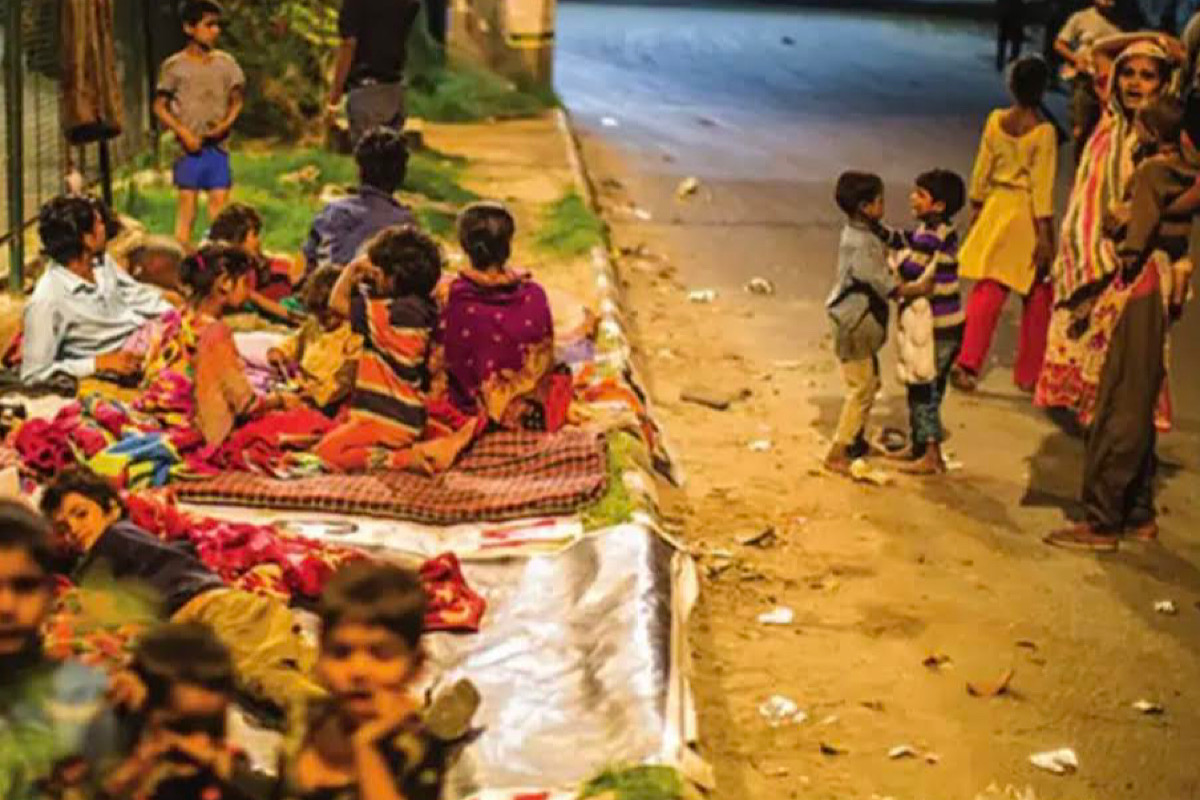Slight improvement in AQI for second day but remains in ‘poor’ category
Delhi's air quality index (AQI) improved slightly on Monday as it remained in the 'poor' category for the second consecutive day, providing not much relief from bad air.
In the recently presented Union Budget the finance minister highlighted several areas of government initiatives which have higher relevance for the poor and vulnerable sections of society. These include the Eklavya scheme for residential students from tribal communities, rural libraries, use of machinery to clean septic tanks to avoid health hazards for workers, more emphasis on millets cultivation and higher allocation for PM Aawaas or the leading housing scheme for the poor. Although details of these initiatives were not spelled out, it is likely that all these will be helpful.

Weaker sections suffered the most during the extremely difficult phase of the pandemic and the prolonged lockdowns [Photo: SNS]
Weaker sections suffered the most during the extremely difficult phase of the pandemic and the prolonged lockdowns. Their recovery has been more difficult due to their low resource base and compulsion to pay back loans taken at high interest rates during the lockdowns. Hence there is a strong case for an inclusive recovery path in India which is caring towards the poor.
In the recently presented Union Budget the finance minister highlighted several areas of government initiatives which have higher relevance for the poor and vulnerable sections of society. These include the Eklavya scheme for residential students from tribal communities, rural libraries, use of machinery to clean septic tanks to avoid health hazards for workers, more emphasis on millets cultivation and higher allocation for PM Aawaas or the leading housing scheme for the poor. Although details of these initiatives were not spelled out, it is likely that all these will be helpful.
Advertisement
At the same time, however, it is equally clear that some of the most important schemes for the poor and vulnerable sections have received lower allocations. This can be seen in several central sector schemes, core schemes and even at the core of core schemes. The overall allocation for the Central Sector Schemes under the Ministry of Labor and Employment has come down even though there was high expectation regarding their increase in difficult times. The allocations for the central sector schemes under the Ministry of Panchayati Raj and the Department for Agriculture and Farmers’ Welfare too have decreased.
Advertisement
Perhaps the biggest area of concern relates to the lower allocations for food and nutrition. In the case of most allocations there is a decline compared to the previous year or else there is near stagnation, which also means a decline in real terms after accounting for inflation. The highest expenditure incurred in the context of food and nutrition is on the food subsidy given by the government to the Food Corporation of India under the National Food Security Act. Rs 208929 crore was spent on this during 2021- 22. The Revised Estimate (RE) for this was Rs 214696 crore. As compared to this, the allocation for 2023-24 is only Rs 137207 crore. This is only about two-thirds of last year’s revised budget while the need is for higher allocation taking into account inflation and higher number of people.
The food subsidy for decentralized procurement of food grain under the NFSA was Rs 79789 crore in 2021- 22. The Revised Estimate for 2022-23 was Rs 72282 crore. This has come down to Rs 59793 crore in the allocation for 2023-24.
For meeting subsistence food needs of the poorest, MG-NREGA, or rural employment guarantee programme mandated by law, is very important. Rs 98467 crore was spent on this programme in 2021-22. The revised estimate for this in 2022-23 was Rs 89400 crore. However the allocation for financial year 2023-24 is only Rs 60000 crore although the Finance Minister has clarified that supplementary allocations will be made in the case of demand.
In the case of Saksham Poshan and Anganwadi the allocation this year is almost the same as the previous year. However in real terms, after accounting for inflation, this is a decline. In the case of the second core nutrition program, called PM Poshan, the revised estimate last year was Rs 12800 crore while the budget allocation this year is only Rs 11600 crore.
The fact that there is a downward trend in all five of these programmes relating to food and nutrition is worrying. Hence there is a clear need for the government to increase these allocations significantly when revised estimates are prepared.
Similarly, a strong case exists for increasing allocations relating to the National Social Assistance Programme (NSAP). In the unorganized sector and among poorer households in particular, pensions to elderly persons, widows and disability affected persons are paid under this programme. The allocations for NSAP have stagnated for a long time (leaving aside any special addition here at the time of the COVID package) and this year is no exception. In real terms, after accounting for inflation, there is a decline. Hence the NSAP is another government scheme which is particularly deserving of additional allocation at the time of preparing revised estimates.
The concern for the poor should be reflected in remedial actions to be taken once it is realized that in some important respects it is very important to add significantly to what has been provided earlier. This is of course important for schemes related to rights-based legislation such as rural employment guarantee and the National Food Security Act but in addition it is also true for very deserving programs like NSPA.
(The writers are, Respectively Honorary Convenor, Campaign to Save Earth Now, and a teacher of economics at the Lawrence school Sanawar)
Advertisement